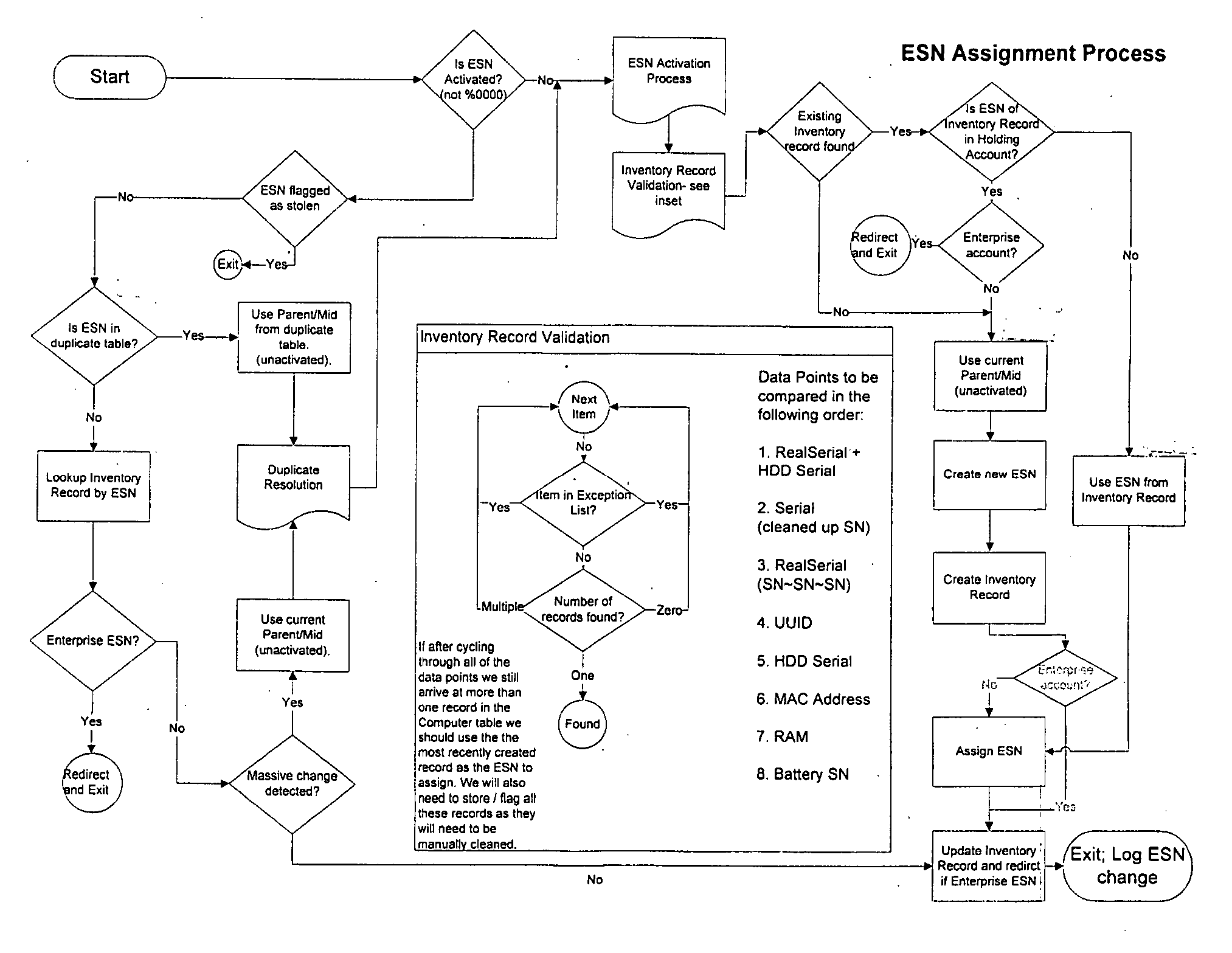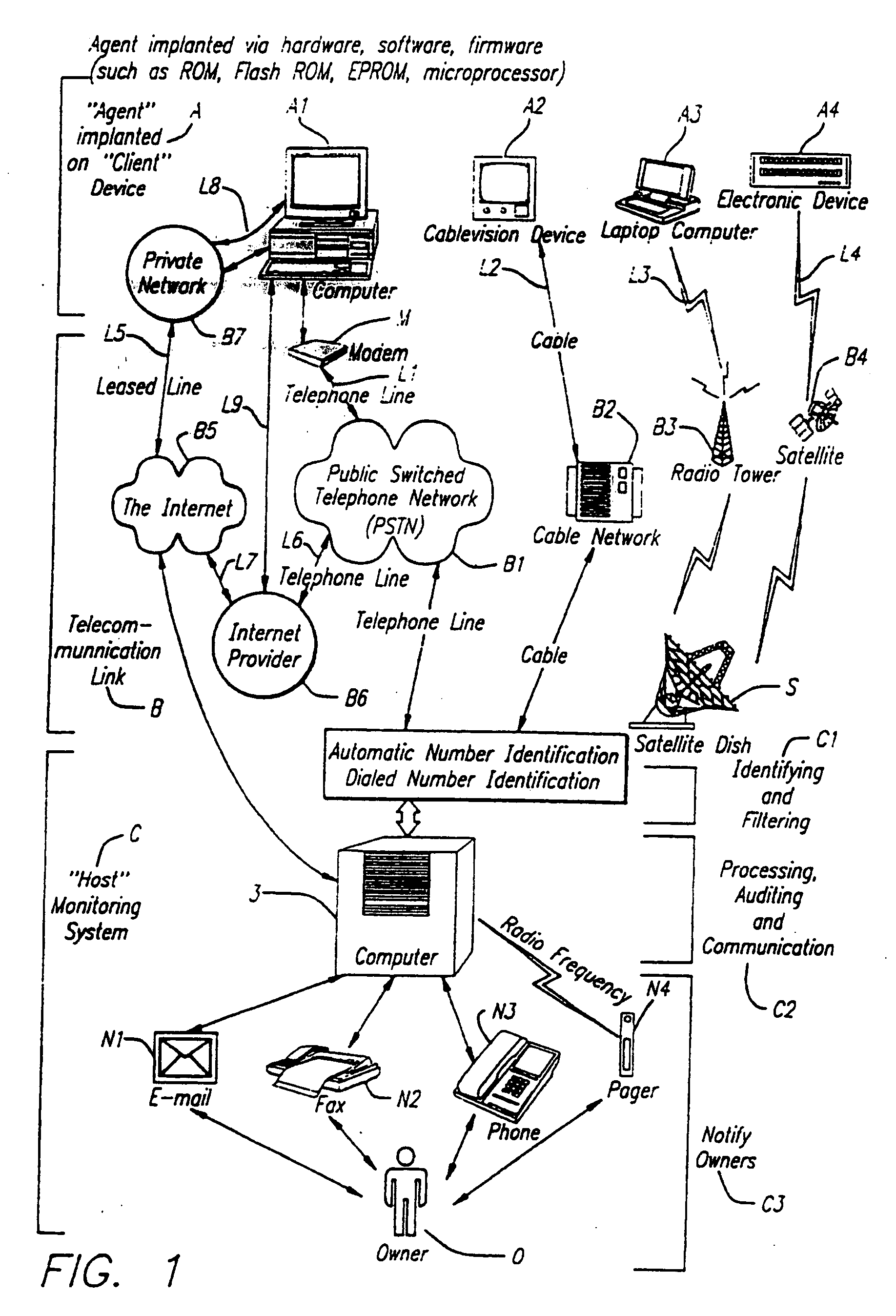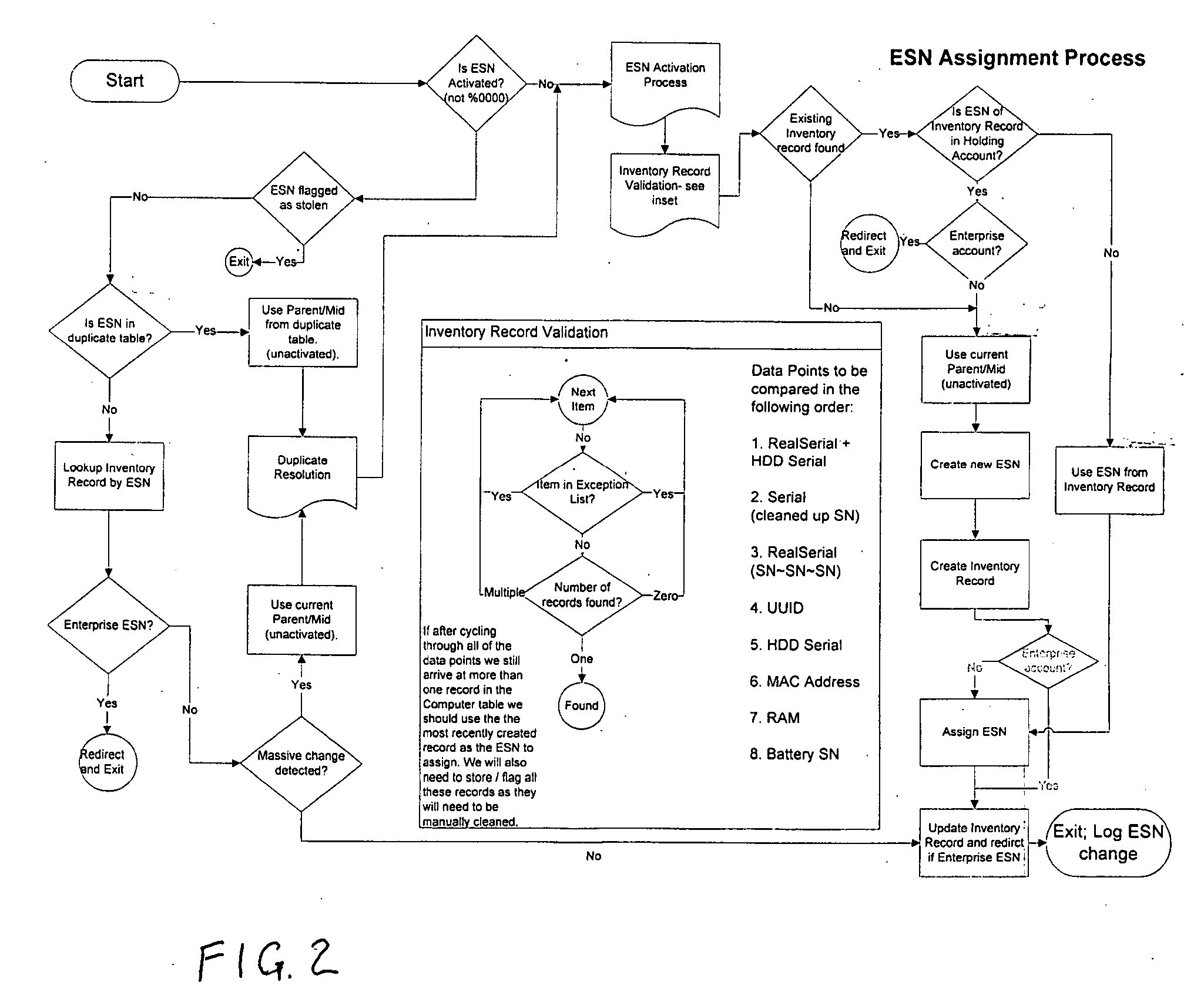Method for determining identification of an electronic device
a technology for electronic devices and identification methods, applied in the direction of unauthorized memory use protection, structured data retrieval, internal/peripheral component protection, etc., can solve the problem of not being able to accurately identify 65% of the actual pc asset base, becoming more difficult to protect ip assets, and simply not being able to accoun
- Summary
- Abstract
- Description
- Claims
- Application Information
AI Technical Summary
Benefits of technology
Problems solved by technology
Method used
Image
Examples
Embodiment Construction
[0017] The present description is of the best presently contemplated mode of carrying out the invention. This description is made for the purpose of illustrating the general principles of the invention and should not be taken in a limiting sense. The scope of the invention is best determined by reference to the appended claims. The present invention can find utility in a variety of implementations without departing from the scope and spirit of the invention, as will be apparent from an understanding of the principles that underlie the invention. For purpose of illustrating the features of the device identification application of the present invention, reference is made to asset tracking as one example of the services in conjunction with which the present invention may be deployed. It is understood that the device identification application may be used for other services, such as computer management, backup and recovery applications, remote data deletion operations, etc., without dep...
PUM
 Login to View More
Login to View More Abstract
Description
Claims
Application Information
 Login to View More
Login to View More - R&D
- Intellectual Property
- Life Sciences
- Materials
- Tech Scout
- Unparalleled Data Quality
- Higher Quality Content
- 60% Fewer Hallucinations
Browse by: Latest US Patents, China's latest patents, Technical Efficacy Thesaurus, Application Domain, Technology Topic, Popular Technical Reports.
© 2025 PatSnap. All rights reserved.Legal|Privacy policy|Modern Slavery Act Transparency Statement|Sitemap|About US| Contact US: help@patsnap.com



